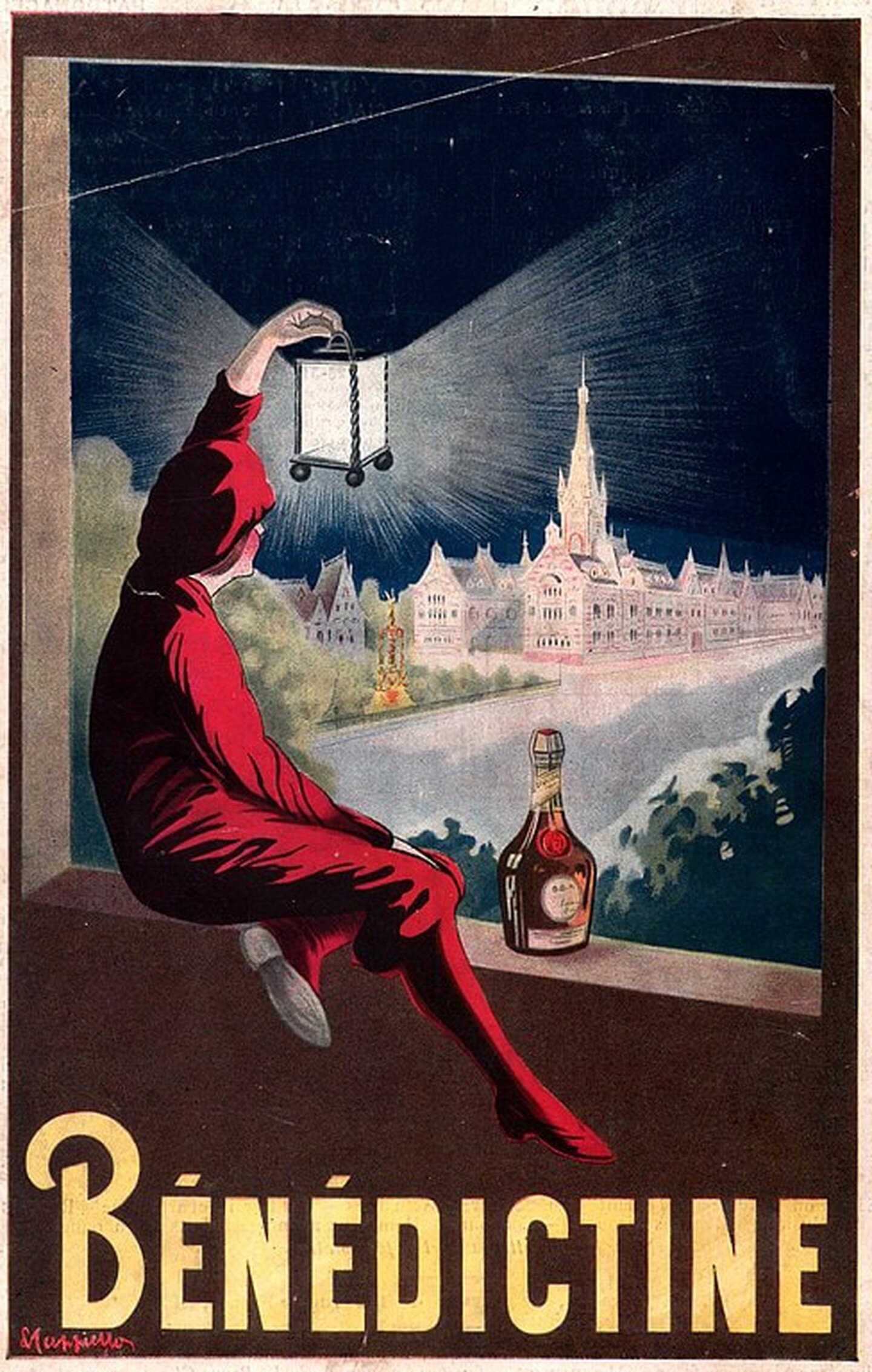Proof that God Loves Us and Wants Us to be Happy
Humans have a tendency to focus on the faults of gigantic institutions and minimize their contributions.
Take the Roman Empire. What did they ever do for anyone? Well, other than the aqueducts. And sanitation. And roads. Irrigation. Medicine. Education, health, peace, public baths, wine-- never mind.
I mean, there are a lot of people who are willing to give Roman Polanksi a pass for what he did to kids just because he directed Pirates, yet they’re all up in the Catholic Church’s shit, and hey— a monk perfected champagne. (Well, ok. It’s easy to criticize the church now; in Torquemada’s day, maybe not so much.)
Dumb
Dom
Domme
Now, I hate to disappoint all you perverts, but this isn’t a post about any of that. It’s about a liqueur connected to a religious order. (By the way, a liquor becomes a liqueur if you add anything to it after it’s distilled.)
In 1510, right about the time that Leonardo Da Vinci was painting the Mona Lisa; Martin Luther was picking a fight with Rome; Michelangelo was sculpting David; Machiavelli was writing The Prince; and Henry VIII was ascending to the throne, a Benedictine monk named Don Bernardo Vincelli created the recipe for Bénédictine, the liquor eponymously named for the order of monks to which he belonged. (The same order, by the way, would spawn our old buddy Dom Perignon more than a hundred years later. Must be something in the water.)
Bénédictine is weird.
It’s one of those secret blend liquors; evidently only three people know the full recipe, which calls for 27 plants and spices. The three main ingredients are Angelica, Eliza, AND Peggy. (Oh, wait. No, sorry. Those are the Schuyler sisters.)
The main ingredients of Bénédictine are Angelica, Hyssop, and Lemon Balm. The latter two are in the mint family, though the liquor doesn’t hit you over the head with mintiness at all. Coming in at 80 proof, Bénédictine is one of those ingredients you probably don’t have in your home bar unless you’re a huge fan of the Vieux Carré cocktail—but you should. (The VC, btw, is equal parts rye, cognac, Bénédictine, and sweet vermouth, with two dashes of Angostura bitters and two dashes of Peychaud’s.)
Vieux Carré
But this post isn’t about the Vieux Carré, either. Not weird enough.
No, this post has a few themes (if you haven’t noticed.) And the cocktail for this post is: The Purgatory.
Created in 2007 by Ted Kilgore at the Monarch in Maplewood, MO, the Purgatory is a masterpiece because on top of its rye whiskey base it layers not just one monastic secret recipe liqueur, but two. It’s got Bénédictine, of course, but it also adds Green Chartreuse (1737/Carthusian Monks/A whopping 130 secret herbs and other plants.)
Chartreuse—the color is named after the liqueur, by the way—is some pretty amazing stuff. Tastes like anise, fennel, pine, tarragon, cinnamon and, well, probably 125 other things too. If you have a bottle of Green Chartreuse in your home bar (and know how to use it), you’ll get mad props from cocktail geeks.
And with that, it’s time to wrap it up. It’s late on a Sunday night, and blogging after a hiatus takes a lot out of a guy. Time to go watch Billions and sip on a Purgatory.
Cheers!
The Purgatory
The Purgatory
2½ oz straight bottled in bond Rye whiskey (I used Rittenhouse)
¾ oz D.O.M. Bénédictine liqueur (The D.O.M. stands for Deo Optimo Maximo, btw)
¾ oz Green Chartreuse
Stir with ice and serve up with no garnish.
The score: 8.0
How weird is it? 8/10.





